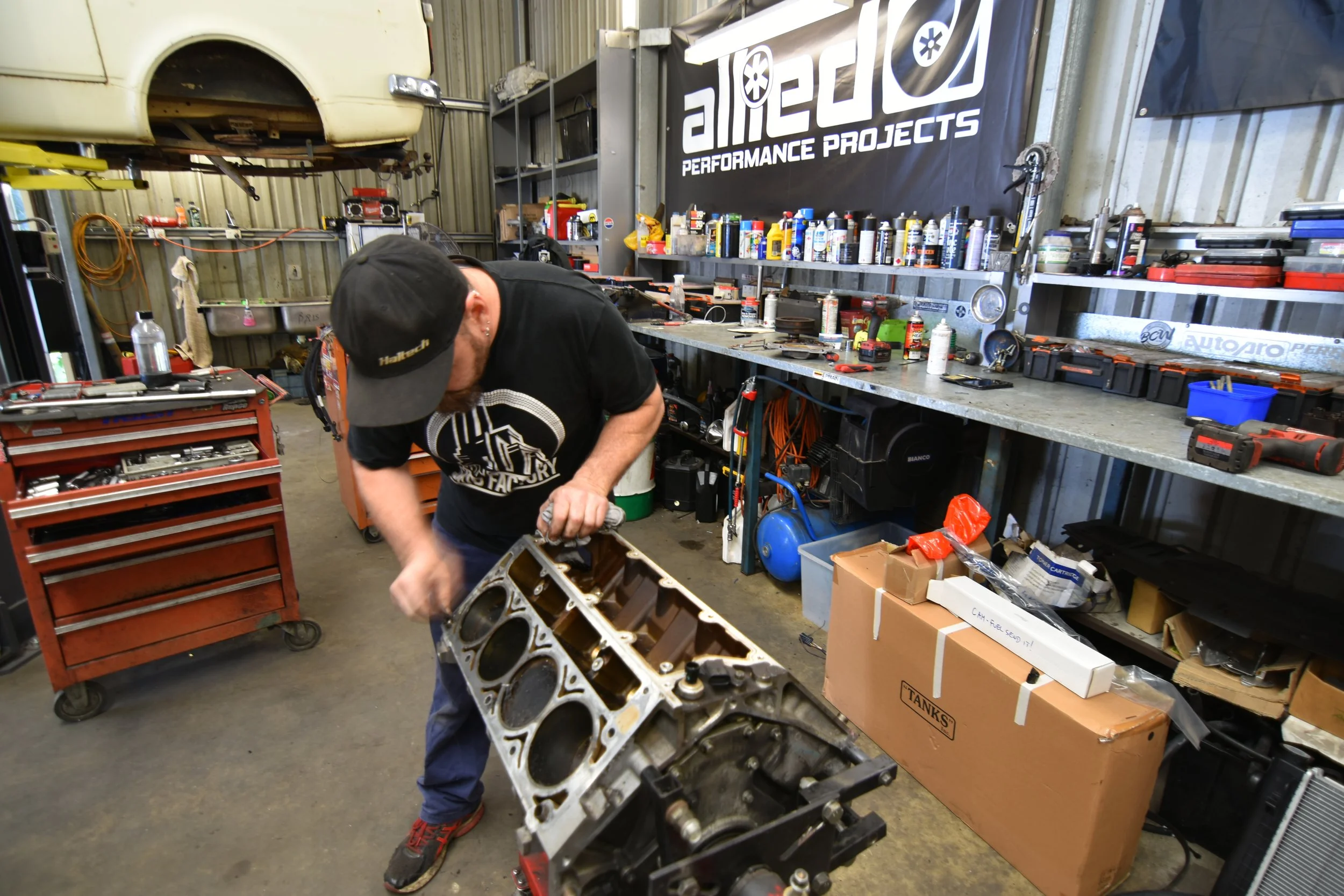Case study: AVOID DISASTERS & RESEARCH YOUR ENGINE PLATFORM CAREFULLY
When engine-swapping a car the generally accepted rule is to buy the biggest-capacity, most powerful, and latest-model variant of the engine family you want to fit. However, there are plenty of cases where specific models of cars feature shortcomings in their design that will catch out ill-informed buyers.
LS swaps are common and easy, and these engines make huge power with fantastic reliability… but they’re not infallible. The alloy Gen4 V8 engines (L76, L77, L99) have several weaknesses, with the factory Displacement On Demand (DOD, or AFM) hydraulic lifters failing in almost 100% of engines.
This is thankfully easily replaced with an aftermarket cam and factory LS7 lifters and buckets, but it is important to be aware of these issues before shelling out money on any old L76/L77 and L99. More involved to fix are the cam bearings in the L98 6.0L Gen IVs, which are almost always guaranteed to wear prematurely, and require a total strip-down to fix.
Interestingly, Ford’s new Godzilla 7.3 V8 has many very similar design features to the LS, and these engines are also suffering catastrophic hydraulic lifter failure. Aftermarket camshafts and the same LS7 GM lifters and buckets are proving to cure this problem, thankfully.
While Volvo’s Whiteblock 5-cylinder engines are renowned for their epic sound and tunability (SEE HERE) the 2.5-litre engines found in the S60 R and V70 R may not be the golden goose if you’re wanting to boost them hard.
The Volvo B5254T4, the 221kW (300hp) 2.5-litre turbocharged DOHC 5-cylinder heart of the S60 R and V70 R, was raved about on the performance Volvo’s launch. Its intoxicating five-cylinder sound and robust factory power are a fantastic starting point. However, hitting the next level of performance requires a disciplined approach, mainly because of the engine’s infamous cylinder wall limitations.
The 2.5L Whiteblock was found in performance V70 R and S60 R wagon and sedan, offering the highest power and torque of any of Volvo’s turbo 5-cylinder engines (see below). Volvo increased the capacity of these engines with the goal of aiding low-end torque and responsiveness, as they were pitching the R-spec models against cars like the Audi S4 and BMW 335i.
While the 2.3-litre B5 engines are renowned for being able to produce far more than their factory-rated power, Volvo pushed the platform’s architecture to its limit for the 2.5-litre B5254T4 and this limits the 2.5L variant’s ability to hold big boost. This comes down to the 83mm bore and 93.2mm stroke, which leaves the cylinders with less block material to be anchored into, compared to the 81mmx90mm bore/stroke of the 2.3L.
This becomes an issue when significantly increasing boost pressure into an engine. Blowing compressed air (boosted air) from a turbo or supercharger into an engine increases the amount of cylinder pressure, and pushing too much boost can deform cylinder heads (lifting them off the deck surface of the engine), push the cylinders out-of-round, or in the case of the 2.5L Volvo it can actually break the cylinders out of the block casting.
This type of shortcoming is incredibly difficult to get past. To handle increased boost pressures you need to tie the cylinders into the block more sturdily, unless you want to destroy engine blocks, and this means the best remedy is to blow the entire engine apart and have aftermarket flange-top cylinder sleeves machined into the block.
The cost of the machining alone would be more than the purchase price of the engine, so this means you’d really only head down the block-sleeving route if you were going to be building the engine with forged internals and upgraded fasteners to make serious (+500hp) power.
To avoid discovering weaknesses in factory engine platforms it is key to do your research first. It’s all too easy to be caught up listening to sound-clips of epic engines on YouTube but when investigating good engine platforms to swap into your project car, there are a few key questions to ask:
How much do these engines cost?
How easy is it to get parts for them?
What are the common problems with these engines?
What issues will I face swapping it into a car that it didn’t come in (FWD vs RWD layout, engine control, etc)?
What transmission options are there?




